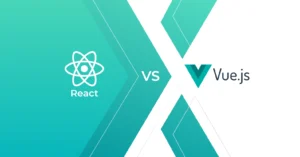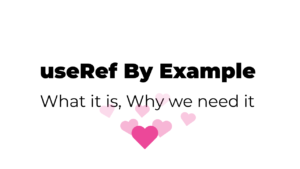#native app #businesses #mobile app #home screen #app development #interface #database access #development costs #pwa development #mode
This article explains the benefits of developing a Progressive Web App. A Progressive Web App is an app-like experience that behaves and looks similar to a mobile app, making it suitable for anyone. PWAs combine the best of the web and mobile worlds, providing an app-like experience without needing to install anything. PWAs offer improved performance over other types of apps, enhancing the end users experience and decreasing user abandonment.
Most PWAs benefit from existing frameworks and UX/UI that allow providing superior user experiences compared to websites. Regardless of technologies, tools and frameworks on which Progressive web applications are developed, Progressive web applications provide the same user experience as native mobile apps do, and it is considered to be superior to that of websites. Even though Progressive Web Apps do feel like native mobile apps, Progressive Web Apps are still dependent on the functions available in whatever browser the users are using. While both are designed to provide a smooth web experience for users on different devices, responsive websites do not offer some of the features that Progressive Web Apps (and native mobile apps) do, for example offline support, push messages.
Progressive Web Apps support features like being able to access the application offline, enable push notifications (currently Android only), and in some cases depending on the operating system of the smart device, access hardware features. With fast and easy installation, Progressive Web Apps support a convenient and accessible way for users to access and use your app, which can help to increase engagement and improve user satisfaction. Users can download and install PWAs just like Users can with any native app, rather than relying on a browser to access PWAs, making the user experience seamless and intuitive. – Developing a progressive web app allows you to take advantage of features that are only available to mobile app people. It also requires much less code and is easier to build than a real mobile app, making it ideal for those who don’t have the budget or coding skills for traditional app development. There are many app builders available that make it easy to develop a PWA without writing a single line of code. Additionally, PWAs can be indexed by search engines, giving them the same visibility as any other website. The best part about developing progressive web apps is that they can be accessed from anywhere with an internet connection and don’t need to be downloaded from an app store like most mobile apps do. This makes them more accessible than ever before and can help you reach more users than traditional apps.
The main benefit of developing progressive web apps is that it provides an app-like experience for the user without requiring users to download a separate application. This is beneficial because it reduces the amount of time and effort users need to take to access content. It also allows users to experience the same level of quality as they would with a native app.
Progressive web apps (PWAs) are a type of web application that can be accessed through a web browser. They provide a smooth web experience and offer responsive websites, regardless of the browser used. Developers have developed PWAs to provide the same user experience as native mobile apps, but with improved performance and flexibility. They also offer offline support, so users can access content even when they don’t have an Internet connection. Additionally, PWAs make use of advanced technologies and tools such as Service Workers, Web App Manifests, Push Messages and other frameworks to create an engaging user experience.
As a result, users can access your app on any smart device – even if they don’t have the native app installed. Furthermore, PWAs don’t require users to download anything before accessing it. This makes it easy and fast for users to access the website app. Moreover, PWAs enable push notifications which improve user satisfaction and engagement. This way, users can stay up-to-date with the latest news or updates from your app without having to manually check for them regularly. Additionally, PWAs are designed to work across multiple platforms and devices, allowing you to reach more potential customers without needing to develop separate apps for each platform. Moreover, they also have access to device-specific hardware features like camera or microphone which further enhances user experience as seamless as possible.
Developing Progressive Web Apps (PWAs) enables developers to utilize existing web technology in order to build apps that are supported by a variety of web browsers, including Android. This allows them to easily create and maintain an app without having to make separate versions for each app store. Additionally, PWAs allow developers the ability to update their apps without the need for users to manually download or install any updates. Moreover, PWAs enable developers to leverage native platform functionality and enable settings that are unique for a particular smartphone experience within their own developed PWA.
People love websites, but they prefer apps. Apps compare to browsers in that apps do not require users to go through the app store hassles. They also have a more attractive interface and are preferred by mobile users. Developing PWAs have added many platform features to the web, enabling web features parity with native applications, as well as low data bandwidth needs. PWAs can compete with native apps, and many businesses are starting to complain that their native apps cannot keep up with such fast-growing technology. This is where PWAs come in; they provide an attractive user interface and added features that help them compete with their native counterparts on the web.
PWAs allow users to have an app-like experience, including open apps, app icons on their home screens, and hardware integration. The best part is that developers don’t have to create a separate version of the web app for each platform. Instead, they can use the underlying platform’s technology to load their site into an app’s own native container. This allows them to take advantage of all the benefits of native and hybrid apps without having to make a separate application list for each platform.
One of the benefits of developing Progressive Web Apps is that they allow users to access all the features of a native app without having to go through the tedious and often complex installation process. This allows users to access automatic data updates, increased responsiveness and comprehensive capabilities that are not available on websites. Additionally, PWAs provide users with a more enjoyable user experience as they can be added to their device’s home screen giving them instant access to their favorite applications. As PWAs are developed with web platform technologies, they do not require submission to an app store, which makes it easier for developers to store complex functionality and databases without having most powerful features in their app.
Businesses organizations can offer their users the option of a progressive web app to meet consumer needs. PWA’s provide users with an app-like experience without having to download and install a separate application. This means that businesses can use software companies to quickly roll out new versions without needing approval from app stores. Business automation is another key benefit of PWAs, as they allow employees to use them in order to perform software tasks more quickly and efficiently. With PWAs, businesses and organizations are sure their users will have access to the most up-to-date version of the platform or app version, eliminating the need for traditional native apps which have several updates available. This means that businesses don’t need dedicated teams of employees performing software upgrades when new features are released – PWAs make sure users always have access to the latest version.
Web app developers now offer web apps as progressive web applications that many single page applications are built upon. This allows businesses to provide a user experience that is similar to most business applications and simulates the native experience of a mobile app on a web browser. Development technologies such as HTML5, CSS3, and JavaScript are used to create responsive and lightweight designs that are optimized for performance and better end user experience. PWAs meet the growing expectations of users by providing them with cutting edge features while also keeping development costs low. This makes PWAs a key differentiator when compared to traditional application development approaches. By using progressive web applications, businesses can create an innovative approach towards app development with standardized approaches and lower development costs than traditional modes.







